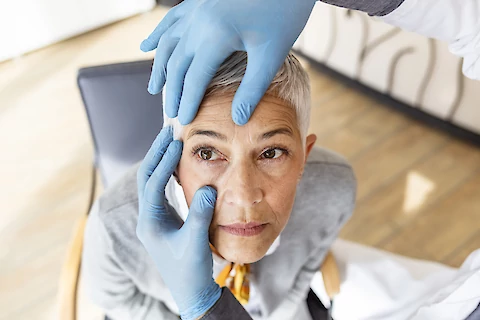
With age comes wisdom, and unfortunately, certain health risks. Two of them being cataracts and glaucoma. These common eye conditions increasingly affect seniors, making a clear understanding of these conditions crucial for maintaining good health and quality of life. Regular eye exams and a commitment to overall eye health can help you avoid those conditions or maintain eye health as long as possible.
Understanding Cataracts
Cataracts and Their Symptoms
Cataracts refer to the clouding of the eye’s lens, creating visual impairment that ranges from minor to severe. The key symptoms of cataracts include blurry vision, seeing double, trouble seeing at night, and seeing colors as faded or yellow. It often develops slowly and may affect one or both eyes.
Risk Factors
While cataracts can occur at any age, the primary risk factor is indeed, advancing age. Other conditions like diabetes, obesity, or excessive exposure to sunlight can also contribute to the likelihood of developing cataracts. Regular eye check-ups allow for early detection and management of this condition.
Lowering the Risk of Cataracts
Preventing cataracts is not always possible, but making specific lifestyle choices can lower your risk. These include a well-balanced diet, regular exercise, and cessation of smoking. If you are diagnosed with cataracts, realistic treatment options include glasses or contacts in the early stages and possibly surgery in more advanced cases. Always remember to consult your healthcare provider when making decisions about your health.
Understanding Glaucoma
What Is Glaucoma?
Glaucoma, on the other hand, is an eye condition where the optic nerve, which connects your eye to your brain, becomes damaged over time. The most common symptom is a gradual loss of peripheral vision that often goes unnoticed until the condition advances. In some cases, it may also cause eye pain and blurred vision.
Risk Factors
Like cataracts, age is a major risk factor for glaucoma, particularly for people over 60. Race, family history, and high internal eye pressure also play a part. Early detection through routine eye examinations is vital as glaucoma is often asymptomatic until significant damage has occurred.
Lowering Glaucoma Risk
There is no surefire way to prevent glaucoma, but maintaining an overall healthy lifestyle can lower your risk. Prescription eye drops or surgery can be used for treatment, depending on the severity of the condition. As always, it's best to ask for guidance from a healthcare professional for an accurate diagnosis and treatment plan.
Regular Check-Ups and a Healthy Lifestyle
As we age, understanding eye health, particularly as it relates to cataracts and glaucoma, becomes increasingly important. Regular eye check-ups are crucial for the early detection of these common age-related conditions. A commitment to a healthy lifestyle can help manage the risks and delay progression.
Help for Seniors With Declining Vision and More
Here at Senior Helpers of San Luis Obispo County, we encourage residents of San Luis Obispo, Santa Maria, Atascadero, Paso Robles, and Arroyo Grande to stay proactive about their eye health. If you need more help at home due to declining vision or other problems, an in-home senior caregiver can help. Contact Senior Helpers San Luis Obispo County to discuss our home care services and how they can improve your quality of life.